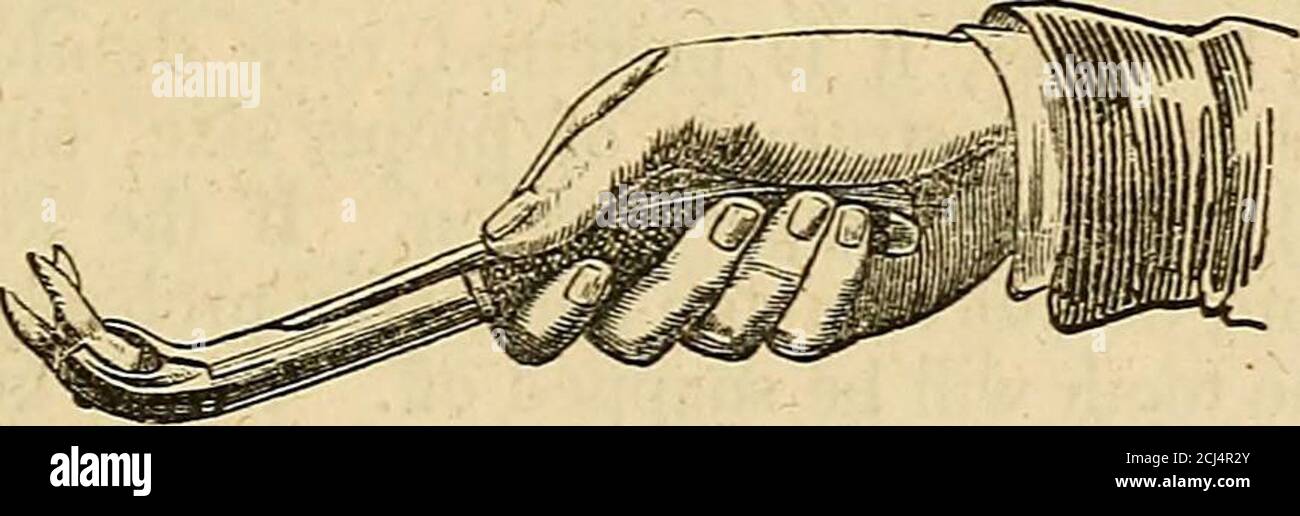. The principles and practice of modern surgery . in particular, and not relieved byextraction, so much as by blue pill and aperients, with small doses of col-chicum. (7.) It sometimes happens that the fang of the tooth is thickened by adeposit of bone ; in which case the tooth becomes affected with severepain that can hardly be distinguished from that of neuralgia. It some-times occurs on teeth that are perfectly sound, but more generally oncarious teeth, or stumps. The excessive pain of this affection is in generalonly to be relieved by extraction. XXXII. Necrosis of Teeth.—A tooth is said t

Image details
Contributor:
Reading Room 2020 / Alamy Stock PhotoImage ID:
2CJ4R2YFile size:
7.1 MB (253.3 KB Compressed download)Releases:
Model - no | Property - noDo I need a release?Dimensions:
2760 x 905 px | 23.4 x 7.7 cm | 9.2 x 3 inches | 300dpiMore information:
This image is a public domain image, which means either that copyright has expired in the image or the copyright holder has waived their copyright. Alamy charges you a fee for access to the high resolution copy of the image.
This image could have imperfections as it’s either historical or reportage.
. The principles and practice of modern surgery . in particular, and not relieved byextraction, so much as by blue pill and aperients, with small doses of col-chicum. (7.) It sometimes happens that the fang of the tooth is thickened by adeposit of bone ; in which case the tooth becomes affected with severepain that can hardly be distinguished from that of neuralgia. It some-times occurs on teeth that are perfectly sound, but more generally oncarious teeth, or stumps. The excessive pain of this affection is in generalonly to be relieved by extraction. XXXII. Necrosis of Teeth.—A tooth is said to be necrosed when ithas become black and unsightly, and loose in its socket. This affectionmay be caused by blows which have torn across the nutrient vessels, —orby inflammation of the pulp (perhaps from the abuse of mercury). Ex-traction must be performed, if the tooth cause inflammation or otherinconvenience. XXXIII. Extraction of Teeth. — The instruments for extractingteeth are the forceps, the elevator, and the key. Fig. 123. Fig. 124.. (1.) The forceps is the instrument that isnow generally employed by dentists. It shouldbe made with sharp edges, so that it may bepushed up between the tooth and the gum, and should seize the tooth by its neck, closeto the alveolus. For this purpose also, thejaws of the instrument should be made to in-cline towards each other in such a way, thatthey may slip up and embrace the neck of thetooth accurately when the handles are pressedtogether; and they should be ground in such a manner that they may be adapted accurately to the shape of each tooth.For this purpose, the surgeon will require several sets of instruments.Two are required for the upper molars—one for each side, because of thethird fang which projects inwards. The above figures show the manner34